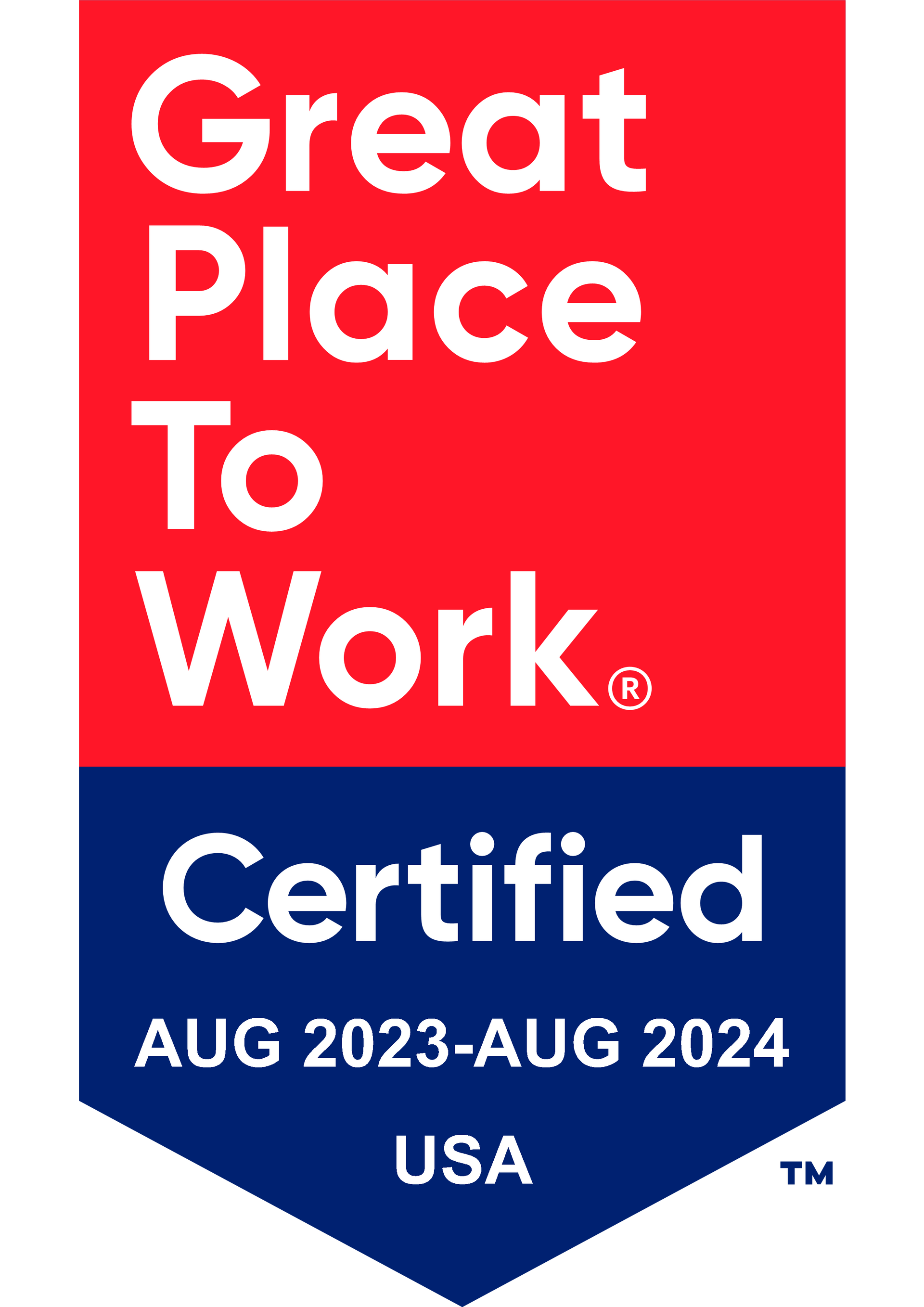Get in touch
408-366-8880
mymail@mailservice.com

Wellness Programs: Are They Worth It?
Wellness programs have garnered a fair amount of attention in recent years. With the consistent increase in healthcare costs and premiums from year to year, some companies have turned to wellness programs to reduce healthcare and medical costs. Other organizations implement them with hopes of seeing an increase in work productivity and morale.
Some implement them as part of their employee value proposition to attract and retain top talent in one of the most competitive job markets, we’ve seen in years while also providing benefits options that meet the needs of the various demographics in the workforce today. Regardless of why an organization is implementing one, the question that eventually comes up is, “do wellness programs work?”
THE PROGRAM’S IMMEDIATE IMPACT
Many studies have been conducted over the past decade to answer that question. The results of these studies have been mixed. A 2010 volume of Health Affairs reported that medical costs fall by approximately $3.27 for every dollar spent on wellness programs. It also stated that an estimated savings of $4.50 in medical expenditures were seen by the Citibank Health Management Program for every dollar spent.
Further, Bank of America, California Public Employees Retirement System, and Johnson and Johnson wellness program case studies also reported similarly estimated health care savings. The concern with these studies, as well as similar studies since then, is the lack of a control group to support empirical evidence to estimate an employer’s return on investment.
CONTROL GROUP FINDINGS
In the past few years, researchers have attempted to study wellness programs using a control group. A randomized clinical trial conducted by the Journal of the American Medical Association (JAMA) from 2015 to 2016 found little financial return on investment in the short term for a BJ’s Wholesale Club wellness program that focused on stress reductions, physical activity, and nutrition. The study tracked approximately 4,000 BJ’s employees.
Another study by the University of Illinois at Urbana-Champaign, The Illinois Workplace Wellness Study, examined a workplace wellness program in 2016 and 2017. The program was available to 3,300 university employees, of which 56% participated after program eligibility, and financial incentives were randomly assigned. After one year, researchers found that healthcare claims and plan premium costs were not reduced as a result of the program.

WELLNESS PROGRAMS: LONG-TERM, BIG PICTURE RESULTS
The challenges with the two most recent studies highlighted above are that they only track short-term returns and are looking at a very narrow or limited control group. In theory, when an organization implements a wellness program to reduce healthcare and medical costs, the return on investment should be easily measured.
SHORT-TERM RESULTS AFFECTED BY POOR HABITS OR BEHAVIORS
If a reduction in healthcare and medical costs is not seen within a year or so, then the wellness program must not be serving its purpose. However, short-term results are often insufficient, as many chronic and severe health conditions require a long-term approach to see a positive impact and a reduction in medical claims.
Also, when implemented to change poor habits or behaviors like smoking — which will hopefully result in reduced healthcare costs — it often takes several attempts for an individual to stop the habit. Eliminating these behaviors can take years. So, it is usual for an organization not to see a short-term impact on the bottom line.
IMPROVED OVERALL WELL-BEING
It is essential to look beyond the short-term financial impact of a wellness program and instead consider the big picture and intangible, hard-to-quantify results. Wellness programs can support employees in reducing stress and making healthier choices, resulting in improved overall well-being. An Aflac study reported that 61% of employees shared that they made healthier lifestyle choices thanks to an employer wellness program.
BOOSTED EMPLOYEE ENGAGEMENT
Wellness programs that encourage participation and group activities can also improve employee engagement. Gallup reported that employees who feel more engaged only miss an average of 1.25 unhealthy days per month, compared to 2.17 days for disengaged employees. Employees who feel well and are engaged tend to be more productive.
ATTRACTED AND RETAINED TOP TALENT
Effective wellness programs also help to attract and retain top talent. Health and welfare benefits are important to all generations in the workforce. Millennials, who are expected to make up more than half of the workforce by 2025, and Gen Z, who are now entering the workforce, both hope to receive wellness perks beyond the traditional benefits platform employers provide. A wellness program could also reach all generations within the workforce by incorporating elements essential to each generation, from gym memberships and charity walks to mental health awareness and free cholesterol screenings.
IDENTIFYING WHAT TO INCORPORATE INTO YOUR WELLNESS PROGRAM
There are different types of wellness programs. Some programs are educational, where employees can explore and take classes, attend webinars or lectures, listen to programs, participate in groups, or watch videos that focus on wellness. Other programs are preventive and offer health screening and assessments and programs to support preventative care, with employee-specific results and recommendations.
HEALTHIER HABIT DEVELOPMENT
This type of plan is created to support healthier habit development and overall wellbeing through programs (such as smoking cessation and weight-loss), activities (such as fun-runs and step tracking), and overall wellbeing and stress reduction through exercise, mental health support, and healthier food options in the office. Social engagement is also the focus of some wellness programs, where employees are encouraged to participate in social or community events. Frequently, these programs have an educational, preventative, healthier habit formation, and social engagement component.
The degree to which the organization is involved in a wellness program varies based on the resources available, the budget, the willingness of management to be involved and engaged, and the employees' desires. Organizations should conduct internal studies and look at external best practices to develop a wellness program that works for their population.
Your benefits broker can work with you to evaluate what might work for your company and look at the different options available to you to create a comprehensive plan. Below are a few options that many organizations incorporate as part of their wellness programs.
FINANCIAL WELLNESS SUPPORT
Many don't think of financial support when they first think of a wellness program. However, finances are a top source of stress for Americans, and stress can negatively impact health and well-being. Per the Stress in America 2019 survey by the American Psychological Association, money was reported as a significant personal stressor by 60% of the participants. The financial wellness component of a program might include financial counseling services and money management support. Financial wellness is important to many adults, so this component could appeal to a workforce that spans all generations.
MENTAL HEALTH SUPPORT
Mental health awareness has become a hot topic in recent years. Many companies are finding ways to support mental wellbeing that goes beyond what is offered as part of the standard medical benefits package or Employee Assistance Program (EAP). Providing a free mental health counselor at a local clinic or free mental telehealth services can add value to an employer wellness program.
Offering a quiet room or mediation room in the office is another option that some companies incorporate to support mental health. Given that depression costs employers an estimated $44 billion annually in lost productivity and that anxiety disorders are the sixth-leading cause of disability worldwide, mental health support can have a direct impact on improving work productivity and reducing lost work time due to mental health conditions.
HEALTH FAIRS
Periodic health fairs are a great way to engage employees of all demographics within the workforce. Offering free cholesterol screening might appeal to older generations, for example. In contrast, a booth that educates employees on how to use a new app to track wellness might appeal to the younger generations.
GYM MEMBERSHIPS
Offering free gym memberships or an onsite gym is one-way employers appeal to employees. Providing a monthly amount that goes towards a fitness membership of some sort — yoga and CrossFit, for example — could reach an even larger employee population.
PARTICIPATION INCENTIVES
Offering a reward for participation is a way that organizations boost the involvement in wellness programs. Rewards might include financial incentives, gift cards, or extra hours of paid time off.
INITIAL AND ONGOING COMMUNICATIONS FOR ENGAGEMENT
It is not uncommon for employees to communicate about new programs at their onset, when changes are implemented, or when a new hire comes on board, and then fail to mention them again. Communications about your wellness program need to be displayed and occur regularly throughout the year to increase employee participation and support its success.
Hard materials to display throughout the office might include posters, postcards, and fliers. Employee swag, including pens, magnets, mousepads, and other practical and useful business tools, can serve as fun reminders as well.
Company website posts and periodic email communications can also serve as reminders to engage employees in the program. Electronic communications that remind employees about what your wellness program has to offer and share useful tips and "how-to" information can be of value to employees.
Topics for such content might be: “tips on how to keep families safe when spending time at the beach or in the sun on summer vacations,” “foods that help to reduce heart disease,” or “ideas that help to reduce day-to-day stress.” It is also an excellent idea for your senior leadership team to speak about your wellness program at company events to encourage participation.
Benefits providers should work with you to develop a communications strategy and calendar for increased engagement. They can also ensure you have the materials you need to communicate your wellness program with employees effectively.

LEGAL CONSIDERATIONS
Wellness programs can have a positive impact on organizations. However, it is essential to employ a program that does not expose the company to unlawful discrimination or the breaking of strict privacy laws.
The Affordable Care Act (ACA), American’s with Disabilities Act (ADA), Genetic Information Nondiscrimination Act (GINA), Health Insurance Portability and Accountability Act (HIPAA), and Employee Retirement Income Security Act (ERISA) are healthcare-related laws that impact employers. There are also state and local healthcare-related laws and tax implications that organizations must consider when evaluating wellness programs.
The ADA and GINA place limitations on the types of information employers can request from employees about their disability and genetic information, respectively, and employer wellness programs must meet the confidentiality requirements set forth by both laws. The ACA and HIPAA prohibit discrimination of employees based on health status.
Programs that reward employees for participating in the program by doing things such as taking health quizzes, taking health assessments, and joining a fitness program are permitted under the ACA and HIPAA. Wellness programs that reward employees for achieving specific goals, also referred to as "health-contingent" programs, must abide by strict rules to ensure nondiscrimination towards employees for whom achieving the goals set forth might be unrealistic or harmful.
ERISA applies to wellness programs that include provisions of medical services. For such programs, COBRA and other requirements of ERISA will likely apply.
Employment laws are continually changing. To ensure legal compliance of any employer wellness program that is being considered or implemented and ensure continual compliance, it is wise for employers to work with a reputable legal team and benefits broker, such as KBI.
WELLNESS PROGRAMS ARE WORTH IT
KBI has been working with organizations of various industries and sizes for years, and we have seen time and time again that wellness programs are worth it. Even though the bottom line might not be directly impacted in the near-term with a clear return on investment, they can have a long-term investment return.
More importantly, they are shown to positively impact employee morale and overall well-being, which equates to increased work productivity — and, by extension, a healthier bottom line. Further, wellness programs help attract and keep top talent as part of an employer's employee value proposition, which is essential for employers attempting to recruit and retain in a highly competitive market.
BUILD YOUR WELLNESS PROGRAM TODAY WITH KBI BENEFITS
We understand that it requires careful thought, evaluation, and consideration to implement a wellness program successfully. At KBI Benefits, we are here to support you from the early stages of examination to maintain a wellness program that supports your employees and budget for long-term success.
If you are ready to explore the travel insurance plans we offer, contact us today by submitting our online contact form or calling us at
408.366.8880. We look forward to working with you!
Services
Latest Thinking




